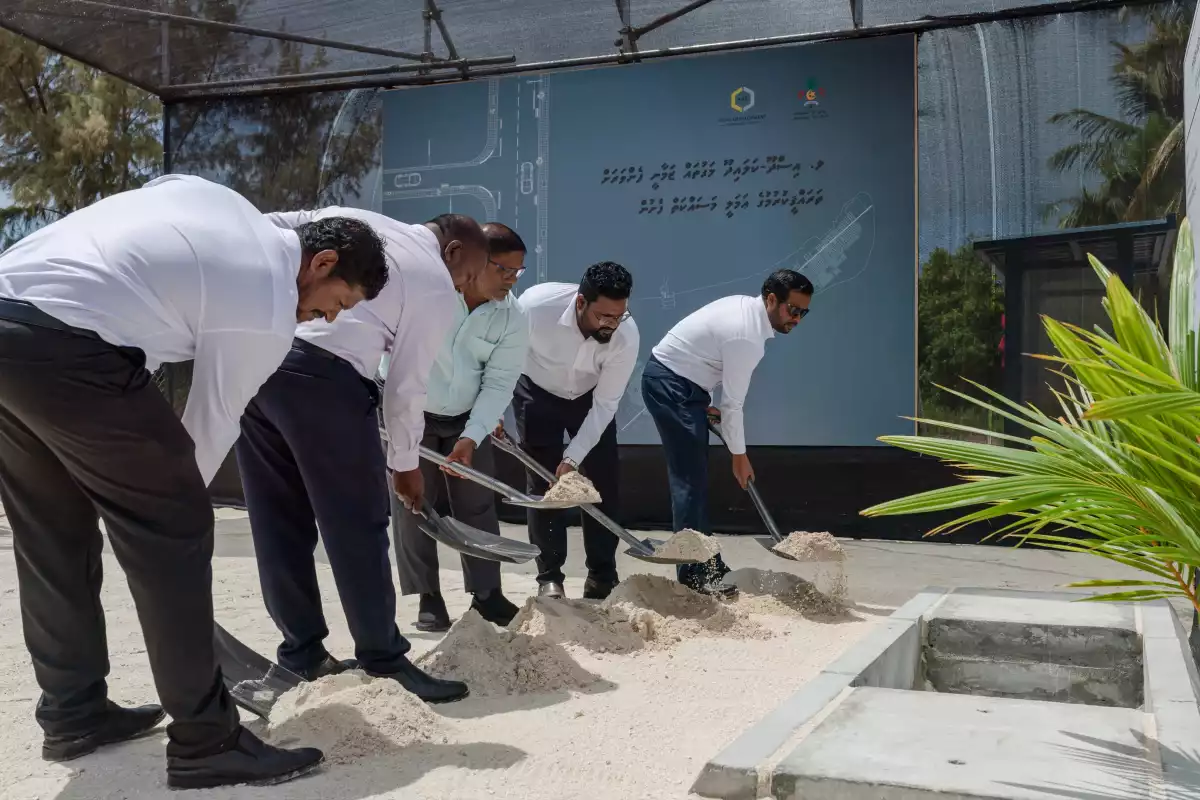Government's spending priorities raise alarm as development projects face sharp cuts while the entire subsidy budget has been depleted ahead of schedule. Despite balanced overall revenue, the stark contrast between bloated administrative costs and shrinking infrastructure investment signals a concerning shift away from long-term national development goals.


Groundbreaking ceremony for main road development project in L. Isdhoo-Kalaidhoo
Government expenditure data as of October 16 reveal a sharp decline in spending on development projects, while the entire budget allocated for subsidies has already been exhausted. Despite a near balance between total revenue and expenditure, the latest figures indicate a growing imbalance in fiscal priorities.
According to the Ministry of Finance’s Weekly Fiscal Development Report, total government expenditure stands at MVR 30.5 billion, against a total revenue of MVR 30.7 billion. Of this expenditure, 78 percent has been spent on recurrent costs, while only 13 percent has been directed toward capital investment, signifying a continued tilt toward operational expenses over development.
Salary and allowance payments alone account for MVR 10.8 billion so far this year, up from MVR 10.2 billion during the same period last year. In contrast, capital expenditure has been more than halved, dropping from MVR 9.6 billion to just MVR four billion.
Of the total annual expenditure estimate, 62 percent has already been spent, but allocations for development programs have lagged significantly. Spending on Public Sector Investment Program (PSIP) projects has dropped from MVR 8.6 billion last year to around MVR six billion this year. The decline spans across key sectors: waste management spending fell from MVR 284 million to MVR 95 million, sewerage systems from MVR 19.5 million to MVR five million, and water systems from MVR 43 million to MVR 9.6 million.
Although this year was declared the “Year of Housing” and MVR one billion was pledged for housing development, only MVR 164 million has been spent so far, well below last year’s MVR 575 million. Land reclamation spending has also plunged from MVR 1.9 billion to just MVR 397 million. Of the MVR 11.3 billion allocated for infrastructure development this year, only MVR 3.4 billion has been utilized.
Meanwhile, discretionary spending continues largely unaffected. Travel expenses have reached MVR 212.3 million out of a total allocation of MVR 249.1 million, signaling limited restraint in administrative spending even as critical development funding stalls.
On the revenue side, 75 percent of government income came from taxes. However, import duty revenue fell from MVR 2.7 billion to MVR 2.4 billion compared to last year. Tourism Goods and Services Tax (TGST) remained the highest contributor at MVR 8.3 billion, followed by domestic GST at MVR four billion, totaling MVR 12.4 billion from goods and services tax. Property and business taxes brought in MVR 4.9 billion, while grants accounted for only one percent of total revenue. Non-tax revenues were driven mainly by airport development fees and resort lease payments.
Despite rising recurrent costs, spending on essential welfare programs has decreased. Aasandha expenditure stands at MVR 1.6 billion, down from MVR 1.7 billion last year; health welfare spending dropped from MVR 310 million to MVR 252 million. Most notably, subsidy spending has already reached MVR 2.5 billion, surpassing the MVR 1.8 billion allocated for the year, suggesting poor budget control and potential funding shortages for the remaining months.
The data underscores a widening gap between government rhetoric and fiscal reality: while key infrastructure and welfare programs struggle with underfunding, recurrent and administrative costs continue to consume the bulk of national expenditure.